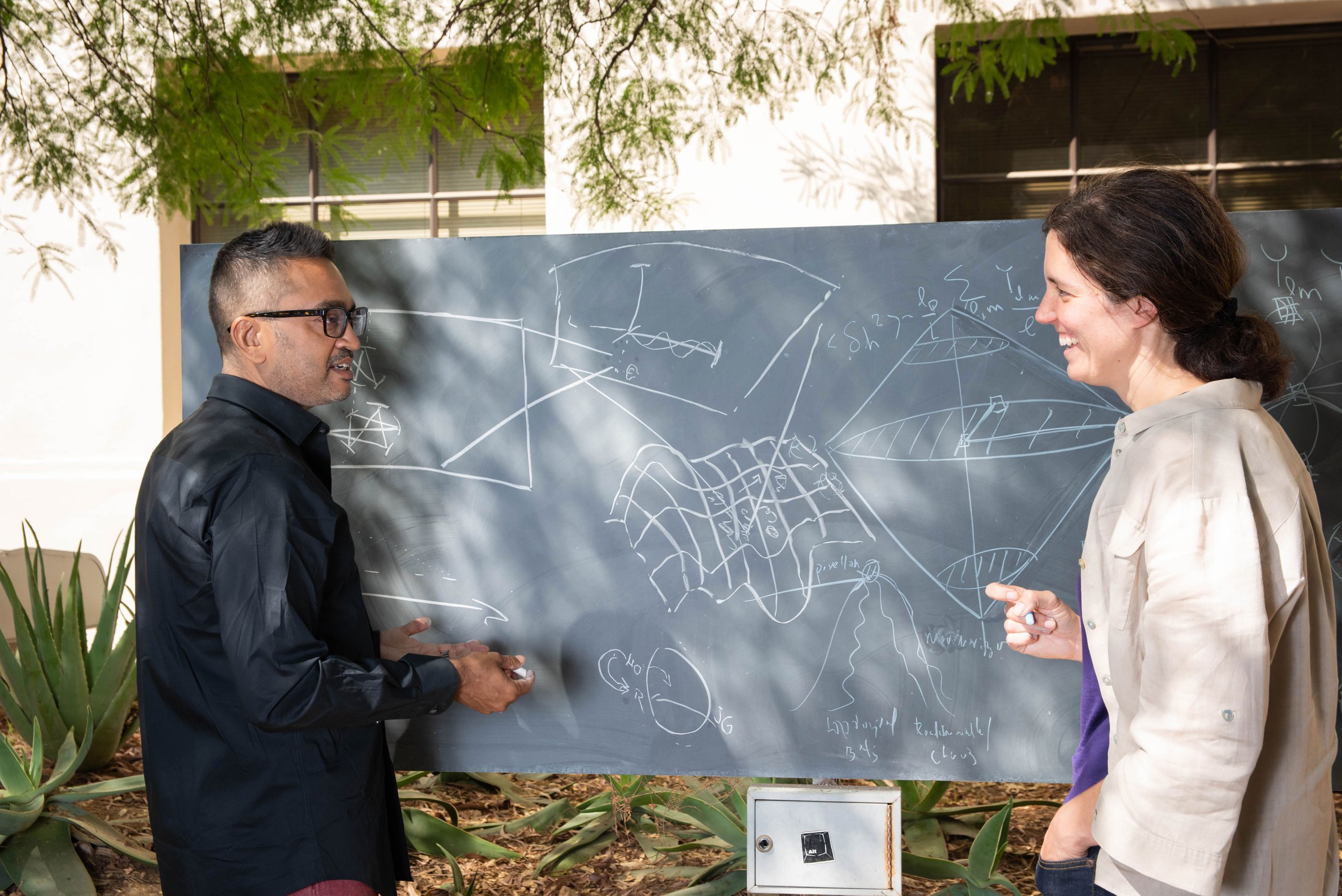Thought and Practice: How an Experimental and Theoretical Physicist Collaborate
Rana Adhikari and Kathryn Zurek. Photo: Lance Hayashida/Caltech
Kathryn Zurek uses theoretical methods to solve some of nature’s deepest mysteries, including the nature of dark matter. Rana Adhikari is an experimental physicist who studies fundamental physics by developing techniques for precision measurements, including proposed quantum measurements of the structure of space-time.
In a recent conversation hosted by the Caltech Science Exchange, the Caltech researchers explained how a pair of physicists with very different approaches can work together on some of the most pressing questions about the nature of the universe. Watch the video below for their full conversation.
Kathryn Zurek, professor of theoretical physics: The work of a theorist is very nonlinear. It involves having ideas, tinkering with the ideas, trying to understand how they fit together, whether it's consistent with everything that we already know theoretically—then most of the time discarding the ones that don’t work. I spend months or years working it out.
At the end, if it hangs together theoretically, I come to an experimentalist like Rana and say, “I have this idea; I think you might be able to measure this.” Maybe the first time I say something like, “I think the effects of quantum gravity might be much bigger than we thought,” and he says, “Oh, that's interesting, but that seems impossible.”
Then I go back and spend another year or two thinking about it, get feedback from the theory community, and come back to Rana: “I did all these other calculations, and it's still there. It's not going away.”
Rana Adhikari, professor of physics: When I hear about these new ideas, it's always exciting. But first, you try to come up with reasons why something can't be true. It starts to get more interesting when you determine there really is no evidence to contradict the new theory, so it could be true. Now the only way we could contradict it is by building the experiment.
It could mean that, for the next decade, I’m going to be working on this frustratingly difficult experiment down in the basement. I have to ask myself: Do I care about quantum gravity enough to keep doing this until I’m old and gray? And the answer is, yes, I care about quantum gravity.
It might sound like drudgery to go to the basement and work for a decade, but it's a lot of fun. It's really challenging to measure tiny, tiny things, but it's really satisfying when it does work. Every day, it’s a mystery: why is that thing moving so much, and what’s going on? It’s a creative day-to-day thing. We don’t know what went wrong last night, or what are we going to do tomorrow. Everybody's on a team and trying to solve the same mystery.

